eROSITA Calibration Products
ARFs and RMFs
The ARFs were composed of (i) QE measurements for a prototype eROSITA CCD with a 200 nm on-chip Al filter at BESSY, (ii) calculated effective area measurements of one eROSITA mirror assembly (based on ray tracing and averaged over the FoV), and (iii) calculated filter transmissions. They contain the effective areas which result from selecting all valid patterns; the loss of sensitivity which results from selecting only specific patterns is taken into account in the normalization of the RMFs.
ARF for 100 nm Al + 200 nm PI ARF for 200 nm Al + 200 nm PI ARF for 200 nm Al
The RMFs were derived from measurements with a prototype eROSITA CCD with a 200 nm on-chip Al filter at BESSY, which were processed at a low energy threshold of ~50 eV. It is likely that the energy resolution after launch will be somewhat lower, due to the need to raise the low energy threshold (for telemetry reasons) and due to radiation damage (which will increase with time). Due to the presence of the on-chip filter these are "type b" RMFs (see below). The RMFs for singles, doubles, triples, and quadruples contain the energy dependent pattern fractions in their normalizations.
RMF for singles RMF for doubles RMF for triples RMF for quadruples RMF for all valid patterns
The RMFs were kept small (1024 x 1024) by adjusting the bin size along the channel energy axis to the spectral resolution below ~8 keV and to the expected photon statistics above ~8 keV. The fact that the observed energies in the photon event file are coded as floating point numbers makes it possible to apply such an adaptive binning. In the ARFs and RMFs, the bin size along the energy axis has been reduced near instrumental absorption edges and around important astrophysical emission regions (see below).
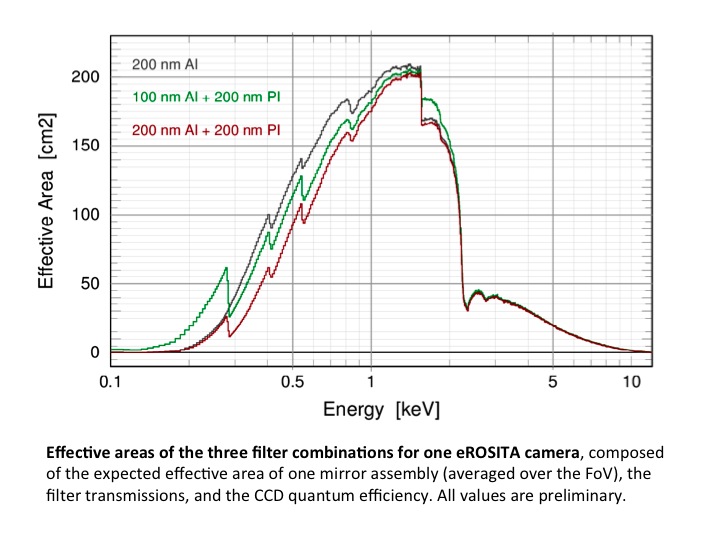
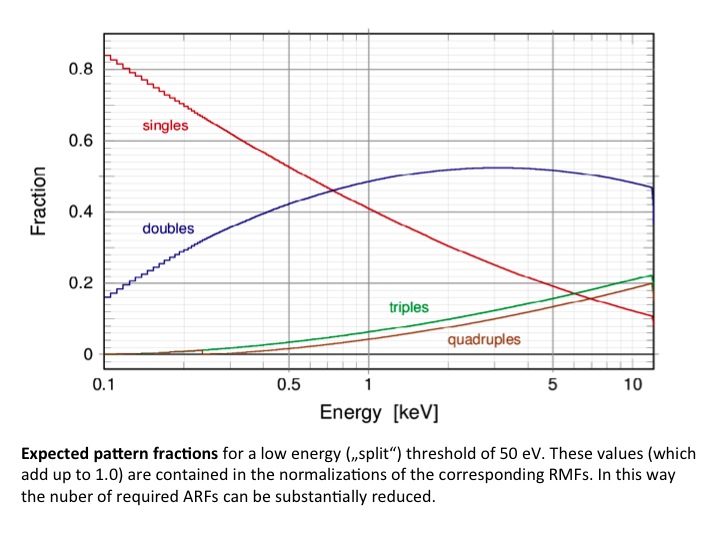
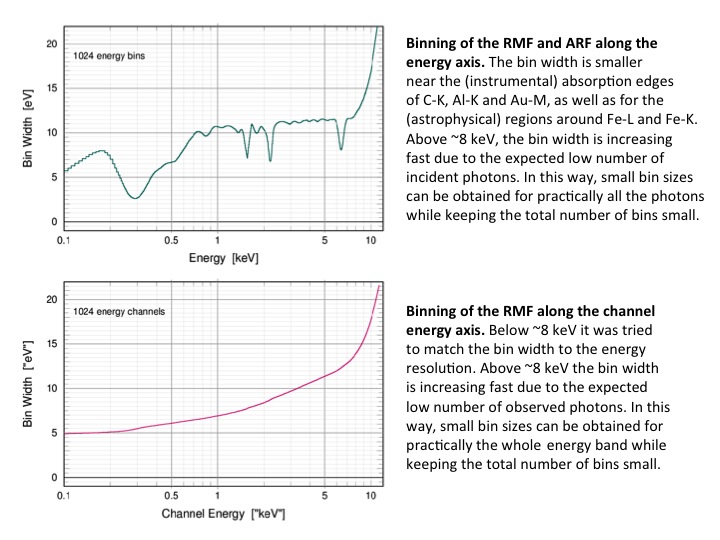
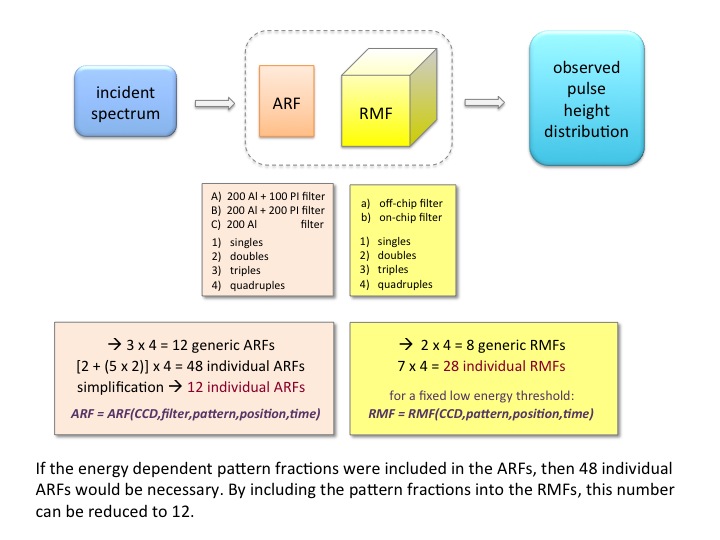
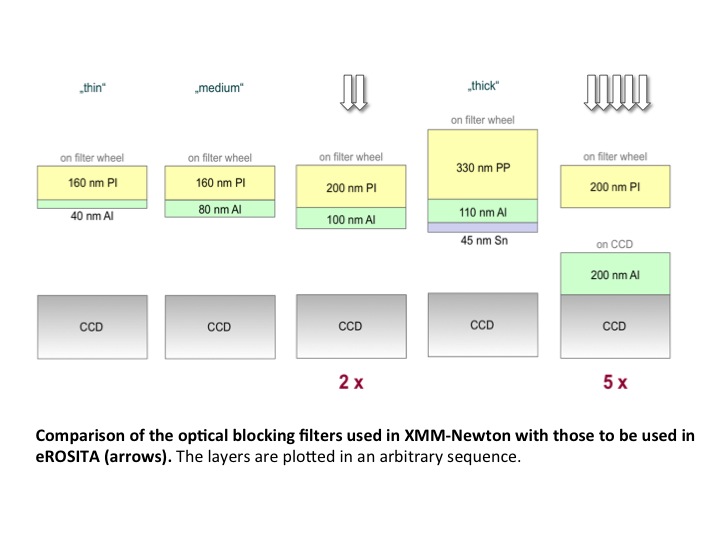
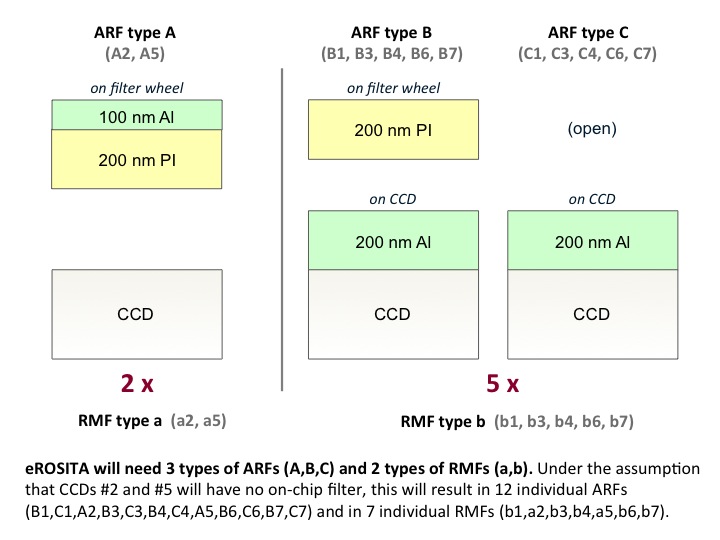
Note: the two CCDs without an on-chip filter (ARF type A) were attached to the telescope modules 5 and 7 (TM5 and TM7).
ARFs for all seven cameras and all valid patterns, averaged over the FoV
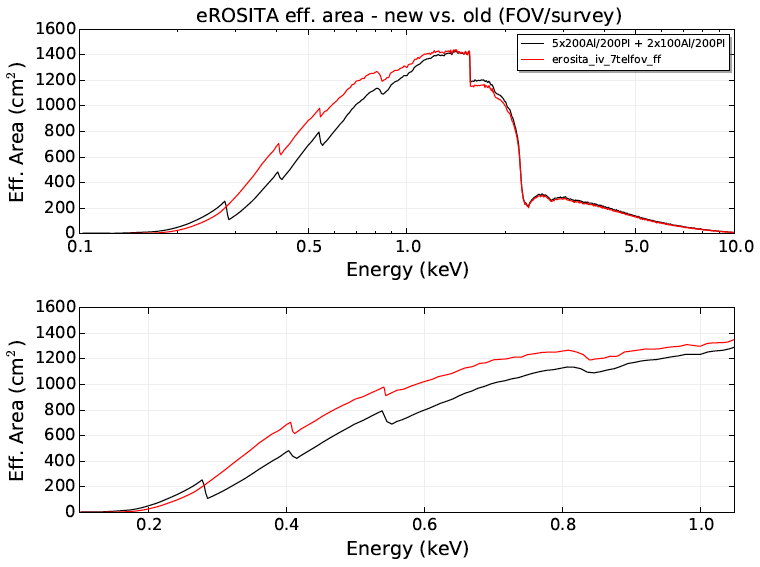
Comparison of the initial (red) and current (black) ARF, provided by Jan Robrade.
Simulated spectra for three cases
Simulations of eROSITA spectra for sources with different characteristics and covering different parts of the sensitive energy band are shown below. The plots with the three spectra are based on the new calibration files described above for the three different filter combinations (same colour representation). The plots with the sole spectra show simulations using the old response matrix version iv which assumed 200 nm Al on-chip without any further filter (corresponding to the new response with 200 nm Al on-chip and open filter wheel position - black curves). For the mirror effective areas in all cases one telescope averaged over the field of view (for survey mode) was assumed. The simulated spectra were provided by Frank Haberl.
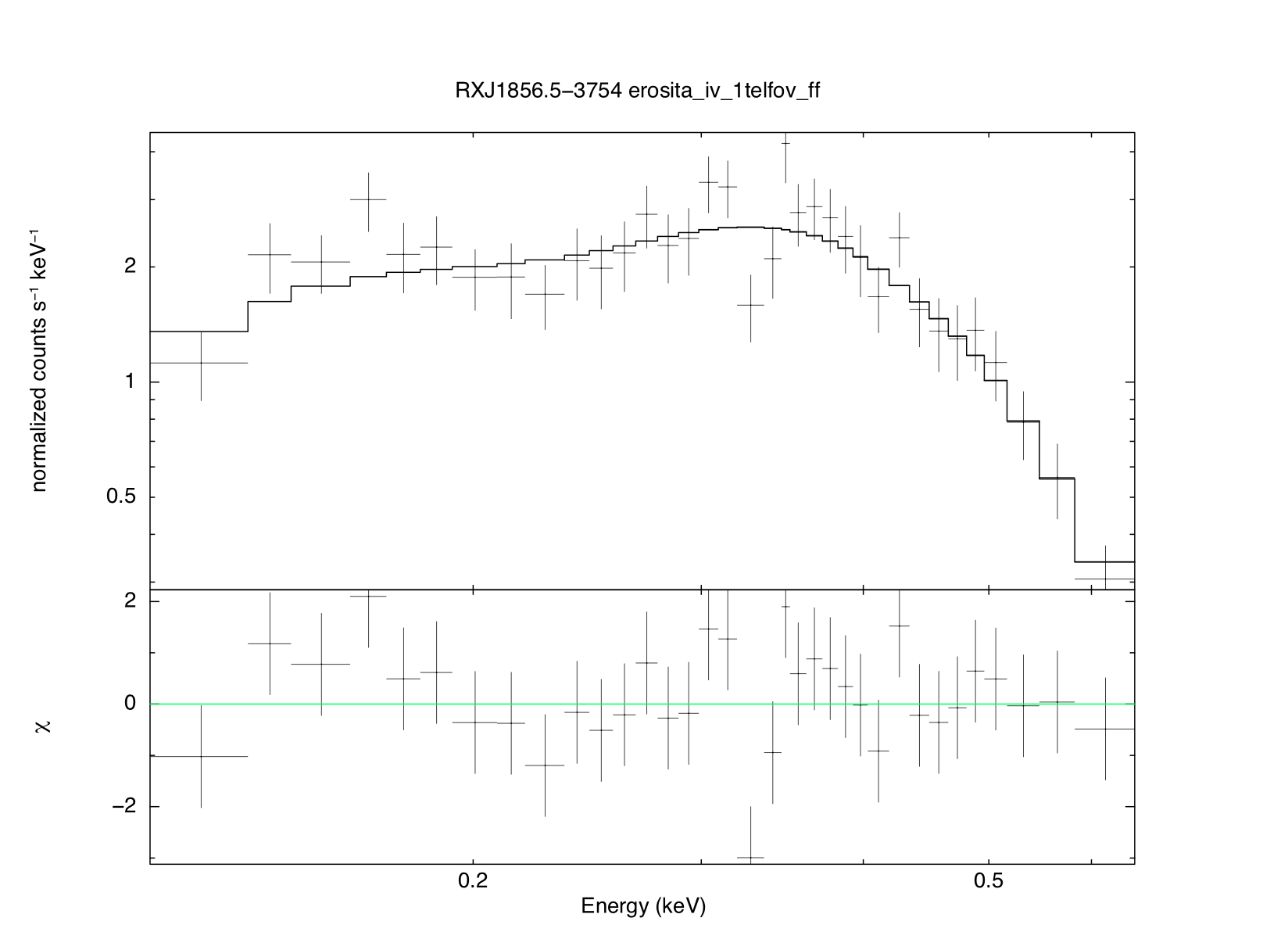
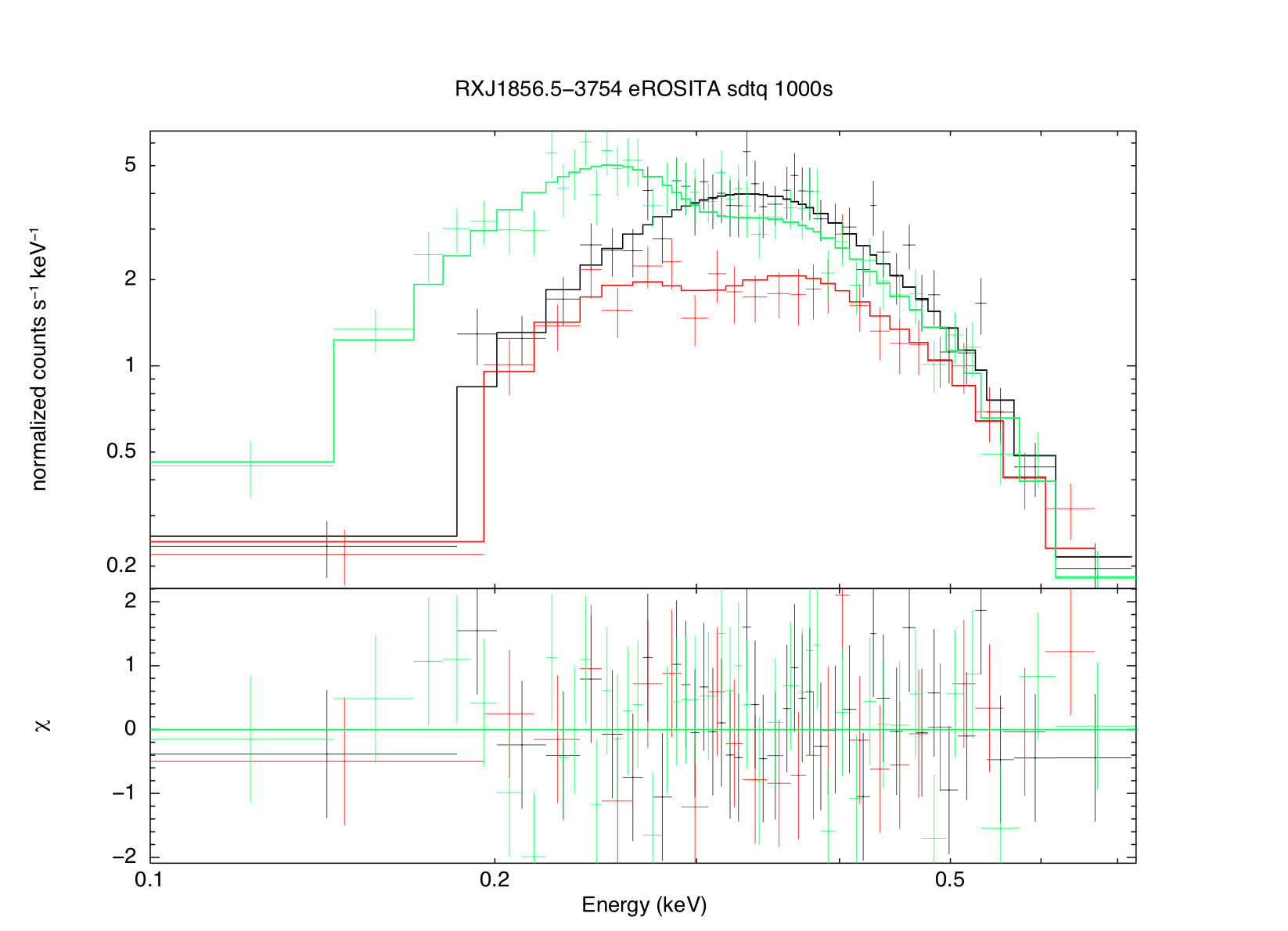
RXJ1856.5-3754: As very soft source the isolated neutron star RXJ1856.5-3754 was chosen with a black body spectrum with kT=61 eV and a low absorption column density of 7.7E19 cm^-2 (left: inital, right: current, black: 200 nm Al, green: 100 nm Al + 200 nm PI, red: 200 nm Al + 200 nm PI).
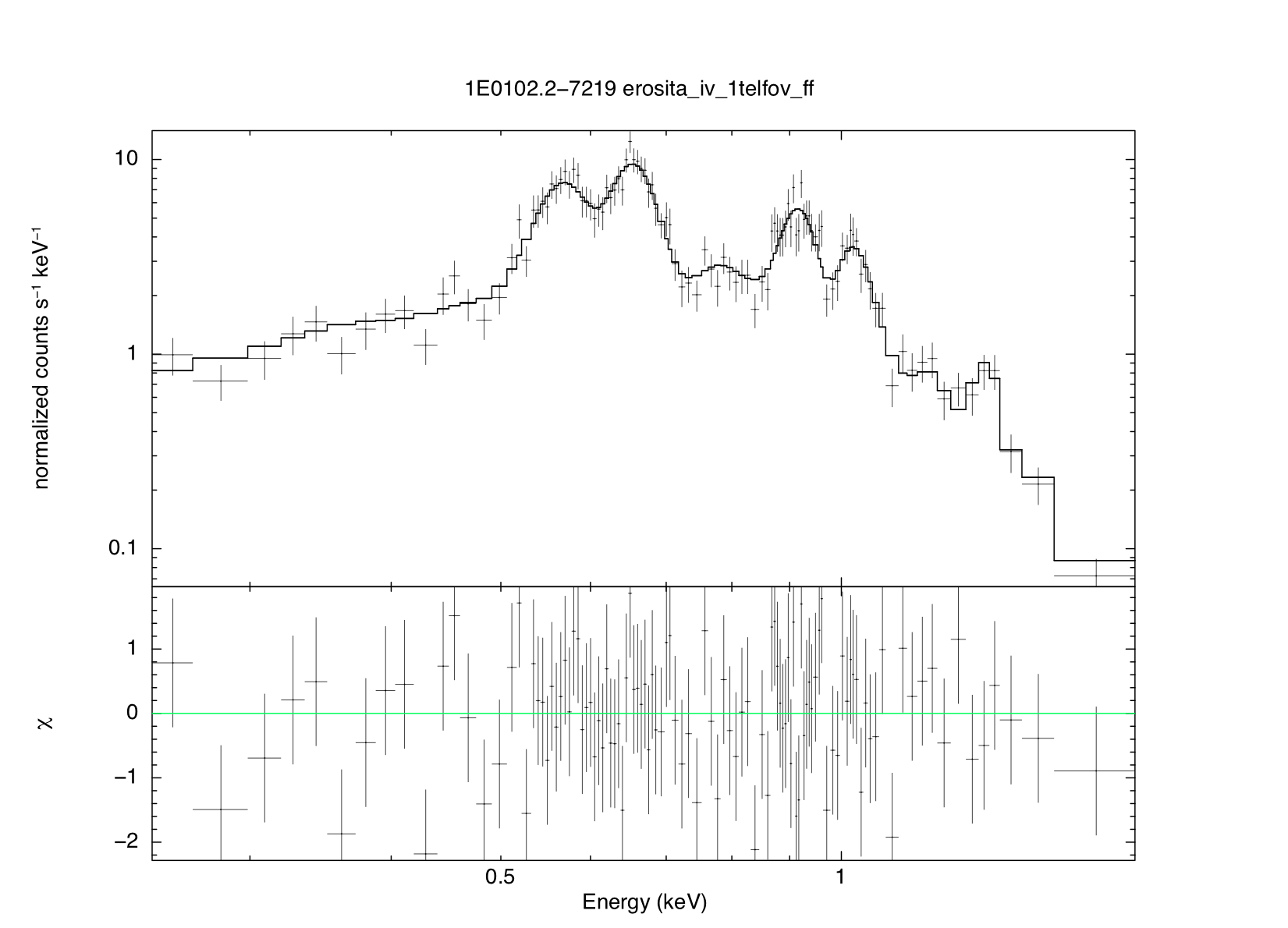
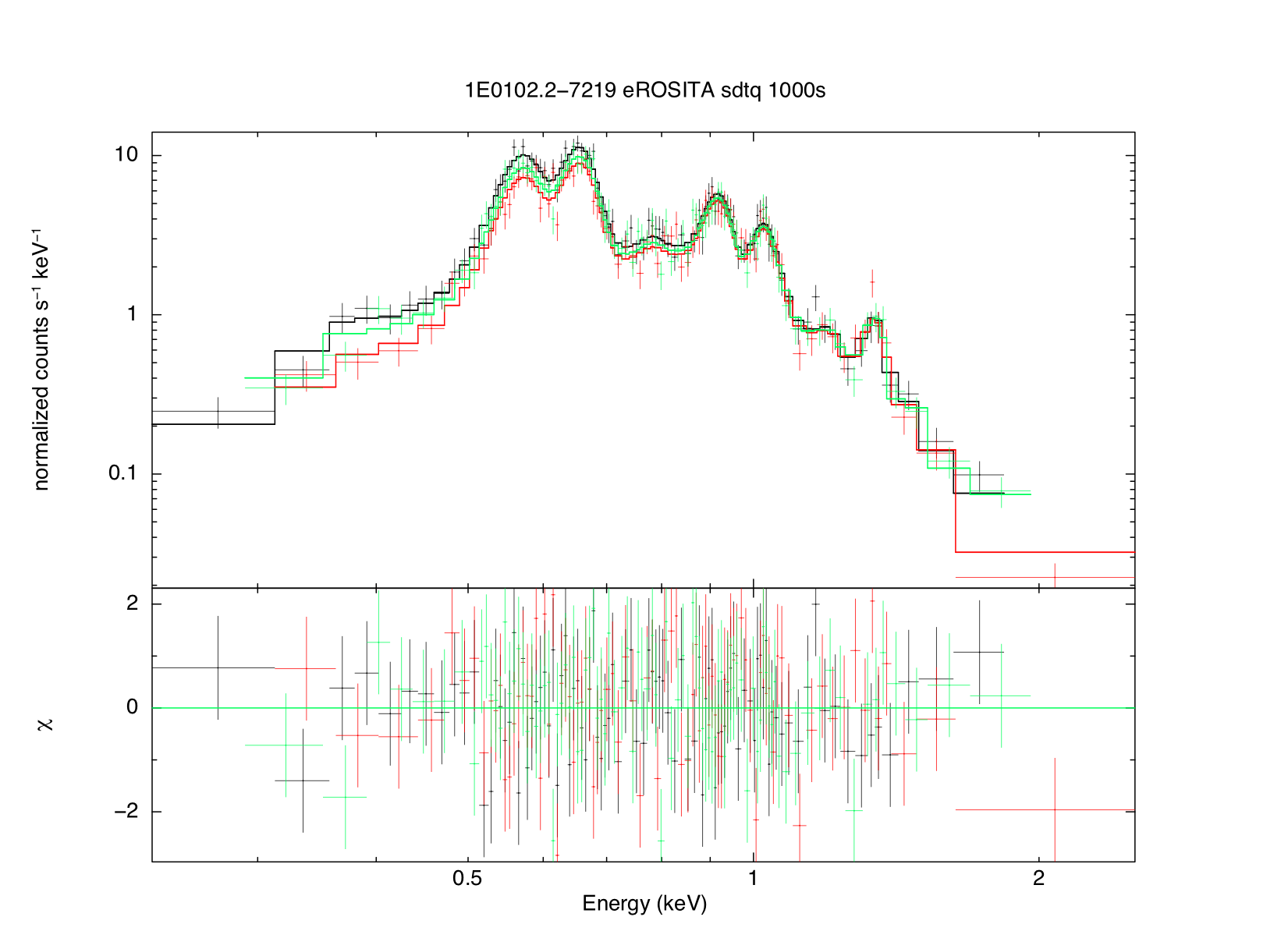
SNR 1E0102: The supernova remnant 1E0102.2-7219 is characterised by many emission lines above 0.5 keV and is used by many X-ray instruments for calibration of the energy resolution (left: inital, right: current, black: 200 nm Al, green: 100 nm Al + 200 nm PI, red: 200 nm Al + 200 nm PI).
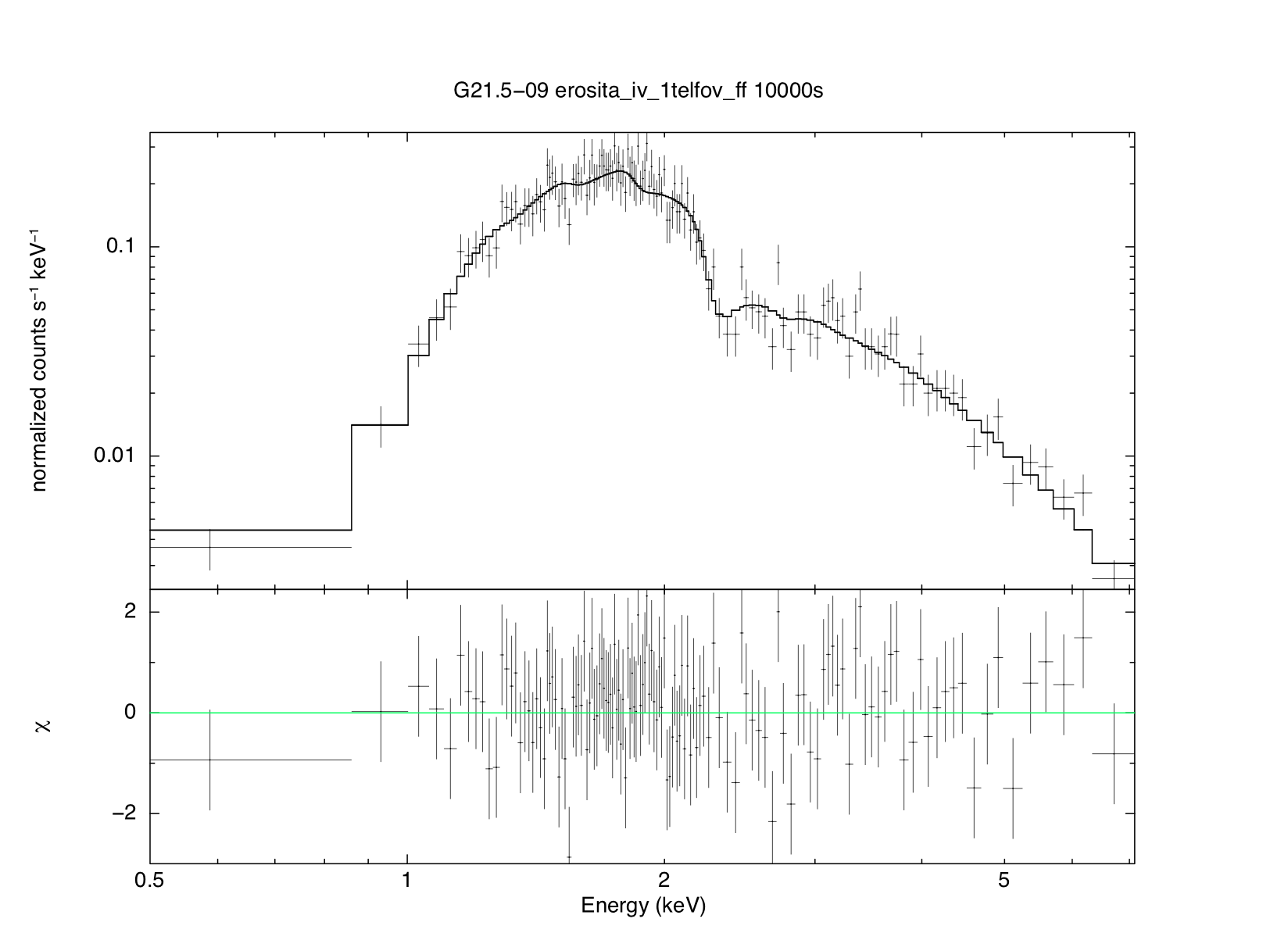
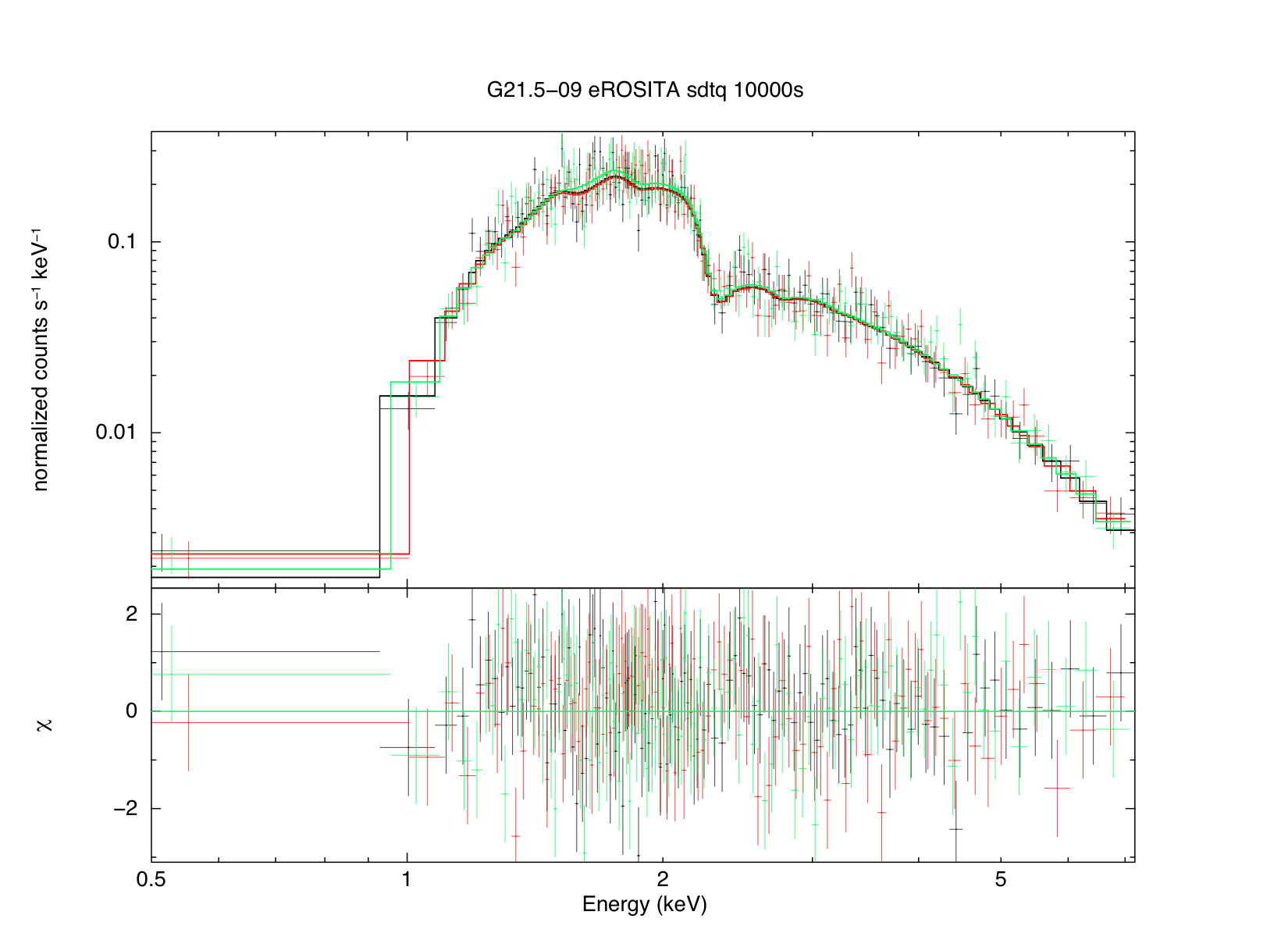
SNR G21.5-09: The harder energy band is represented by the non-thermal spectrum of the supernova remnant G21.5-09 with a photon index of 1.76 (which is also typical for AGN) and a high absorption column density of 2.2E22 cm^-2.
As can be seen from the comparison of old and new response files, the detectors show very little re-distribution at lowest energies (see in particular RXJ1856.5-3754).